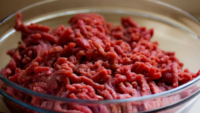FAO, WHO Publish First Global Report on Cell-Based Food Safety

Credit: Leonardo Luz via Pexels
The first global report on the food safety aspects of cell-based foods has been published by the Food and Agriculture Organization of the United Nations (FAO) and the World Health Organization (WHO). The report is intended to provide a solid scientific basis to begin establishing regulatory frameworks and effective systems to ensure the safety of these alternative proteins.
According to FAO, at present, more than 100 companies around the world are already developing cell-based food products that are ready for commercialization and awaiting approval. Some countries, such as Singapore and the U.S., have already made steps toward introducing cell-based foods to the market. With its publication, FAO/WHO sought to identify the potential food safety implications before products become widely available to consumers.
The report, titled, Food Safety Aspects of Cell-Based Food, includes a synthesis of information on terminology; the principles of production processes; an overview of the global regulatory landscape; and case studies from Israel, Qatar, and Singapore. The results of an FAO-led expert consultation where food safety hazard identification was conducted are also included.
Although FAO refers to “cell-based” foods as such, the report acknowledges that “cultivated” and “cultured” are also commonly used descriptor terms by consumers, industry, and authorities. Regardless of the term used to describe cell-based foods, FAO urges national regulatory bodies to establish clear and consistent language to mitigate future miscommunication, which is especially crucial for proper labeling.
The scope of the hazard identification covered four stages of the cell-based food production process: cell sourcing, cell growth and production, cell harvesting, and food processing. The experts agreed that, while many hazards are already known and exist in conventionally produced food, specific consideration should be given to the unique materials, inputs, ingredients (including potential allergens), and equipment inherent to cell-based food production, which may necessitate a food safety assessment that differs from assessments for traditional foods.
Additionally, while generalizations can be made about the cell-based foods production process, it may be appropriate to conduct food safety assessments on a case-by-case basis, as each product may use different cell sources, scaffolds/microcarriers, culture media compositions, cultivation conditions, and reactor designs.
The report also notes that, in most countries, cell-based foods can be regulated within existing novel food frameworks. For example, Singapore has already made amendments to its novel food regulations to specifically include cultured meat, while the U.S. has addressed labeling and safety requirements for food made from the cultured cells of livestock and poultry through a formal agreement between the U.S. Food and Drug Administration (FDA) and the U.S. Department of Agriculture (USDA). Moreover, USDA has stated its intent to draw up regulations on the labelling of meat and poultry products derived from animal cells.
Although the list of hazards forms a basis for next steps, more data generation and sharing at the global level must occur, because there is “currently a limited amount of information and data on the food safety aspects of cell-based foods to support regulators in making informed decisions,” according to FAO. International collaborative efforts would benefit various food safety regulatory authorities, particularly those in low- and middle-income countries, in developing an evidence-based approach to ensuring the food safety of cell-based foods.
The present report follows three background documents published by FAO and WHO in October 2022 on the terminologies, generic production process, and existing regulatory frameworks of cell-based foods.
Looking for a reprint of this article?
From high-res PDFs to custom plaques, order your copy today!





